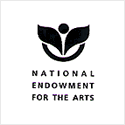New Traditions:
Saint Paul Sunday Welcomes
Fiddler-Violinist Mark O'Connor
September 21, 1997
by Vaughn Ormseth
When you think of fiddle music, you might think of Appalachian bluegrass contests, Nashville country bands, or Irish firesides. You probably don't conjure up the European Baroque. But the American fiddler Mark O'Connor - who will appear this Sunday on the popular public radio series Saint Paul Sunday - revels in that very connection. "The Baroque influence on fiddling cannot be overlooked," contends the soft-spoken virtuoso, whose performances and compositions are transforming the way people listen to music of all kinds.
The centerpiece of O'Connor's Saint Paul Sunday program is his own recent "Quartet for Violin, Viola, Cello and Doublebass," a work that celebrates American fiddling within the rich background of its eighteenth- and nineteenth-century European origins. His collaborators on the work are three of America's finest string artists - violist Daniel Phillips, cellist Carter Brey, and double-bassist Edgar Meyer. O'Connor first met and got to know each of them during his participation in the Sante Fe Chamber Music Festival.
A "Mind-boggling Prospect"
It was the Santa Fe Chamber Music Festival, in fact, that provided O'Connor with the quartet's initial inspiration. The Festival commissioned the work in the afterglow of two "Improvised Concerts" O'Connor performed there - the first appearances by a non-classical artist in the Festival's history. When the festival director approached him with the possibility of creating a work that married classical music with American fiddling idioms, O'Connor found it a "mind-boggling" prospect.
"I just did not know if it was going to be possible to blend the two. I didn't want to be a part of the incredible amount of compromising I'd heard [in similar projects.] The real issue became the practical nature of working with two different genres. That started me thinking about what direction to take. I asked myself again and again if it was possible to have a natural-sounding classical piece that involved a folk musician." When O'Connor did sit down to compose, his friendship with Phillips, Brey, and Meyer facilitated the process. "I wrote the quartet with them in mind," O'Connor explains. "It was easy to find them - they actually found me. When the Santa Fe Festival was on tour, they showed up for a surprise performance at my wedding."
When "Quartet" was finally performed, it received standing ovations at premieres in both Santa Fe and Seattle; in Santa Fe, those accolades included the several composers-in-residence there. "When I look back now at how I was sweating it out, I think I'm just so lucky it came," O'Connor says with some relief. "Somehow the end results sound completely natural - the piece breathes and flows."
Beginnings
Though O'Connor's recent forays into classical writing have generated tremendous response, he is no stranger to musical fame. A prodigy, he won his first competition - a classical guitar contest held University of Washington in his native Seattle - when he was just 10. By age 11, he had adopted the violin, winning his first contest for that instrument within the year. And by 14, he had taken virtually every major prize possible for a fiddler. Soon after moving to Nashville at the urging of Chet Atkins, he embarked on a remarkable collaborative career that was to embrace a wide range of musical styles and forms - everything from bluegrass and country to rock, jazz, and classical. The Grammy-winning O'Connor has performed with artists as diverse as Yo-Yo Ma, Stephane Grapelli, Dolly Parton, Paul Simon, among many others.
O'Connor's commitment to bringing his music to new audiences has made him as popular a teacher as he is a performer, and he blends the two roles with considerable exuberance and wit. One children's concert stands out in particular - he played the entire 45-minute event, part of an outdoor street festival, on skateboard. O'Connor gets a twinkle in his eye when he explains himself. "I did it just to prove to the kids that we adults know how to have fun too. I knew all that early skateboard training would come in handy someday."
A New Music
"Quartet for Violin, Viola, Cello, and Doublebass" is - as its title announces - a clear break with traditional string quartet instrumentation. O'Connor's decision to forgo second violin in favor of double-bass represents the artistic essence of the work as well as its unique architecture. "I really wanted to highlight the fiddle playing," O'Connor explains. "Two distinct stylists on the same instrument would have led to distracting competition between the instruments that I didn't want. Also, a lot of the fiddling is very fine and articulate - a different kind of playing from the usual romantic bravado given a lead violin - and the cello and double bass help support the fiddle's character."
The configuration seemed innate to O'Connor from the start. "It was a completely natural set of instruments for me - closer sonically to other [non-classical] ensembles I'd performed with. It was only after composing that I learned what a unique instrumentation it was, and I couldn't believe it because it wasn't a stretch for me at all." The work, whose American character is immediately recognizable, sets up a kind of conversation between the solo fiddle and the other musicians' more traditional string writing. O'Connor designed the four movements to reflect his belief in the basic changelessness of fiddling, a notion he contrasts with classical music, which can be divided into various eras and styles.
"Fiddling is essentially timeless - it's current now. It's something that was born and perfected in a simplistic way that never needed to change. The classical music of a hundred years ago sounds very different than today's, whereas if you were to travel, say, to Ireland, the fiddle music you hear there now would not sound unlike it did centuries ago." He likens the quartet to a kind of time "travelogue" - a free movement forward and back between fiddling and the distinct classical eras that resonate with fiddling idioms. O'Connor calls it "an ever-moving motion of sound that encapsulates the fiddling genre."
"When I mix in styles of fiddling with classical instruments I'm picking periods of time along the way. Some are modern relationships to classical, some are older." This Sunday, Saint Paul Sunday listeners will hear the astonishing new voice that emerges out of these relationships. As the dialogue among the fiddle and its classical partners progresses - a design that O'Connor traces in the first three movements as "Baroque-modern-Baroque" - it eventually synchronizes, by the fourth movement, into "a completely new music, neither modern nor baroque, born out of the relationship."








